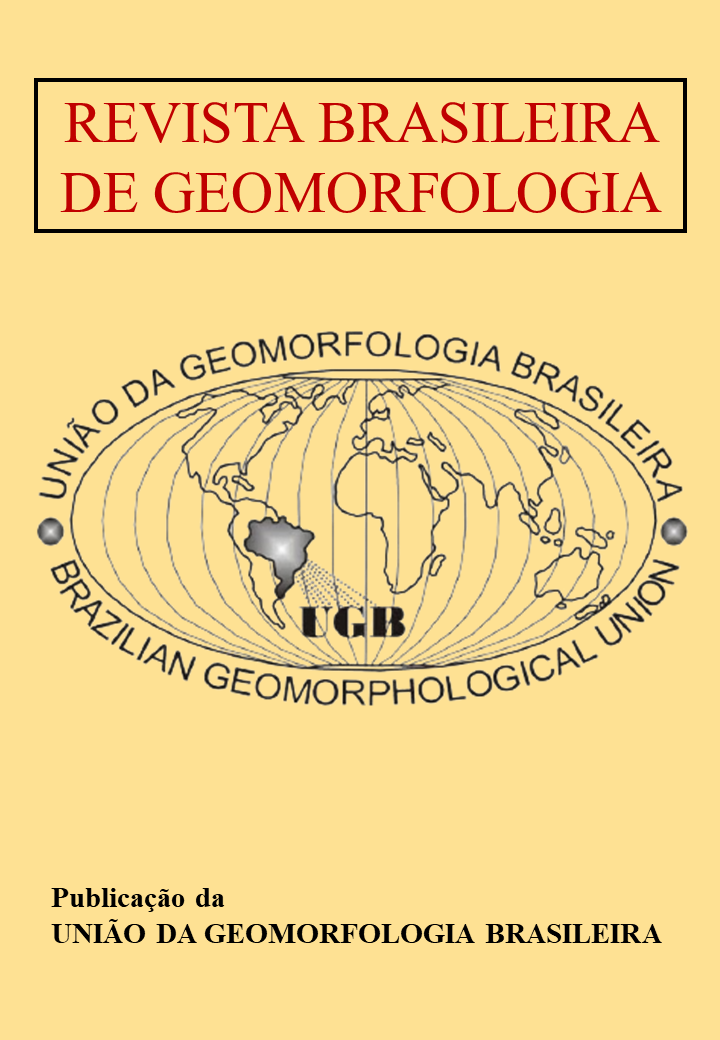Scenarios of current fluvial connectivity and water-sediment interaction in4 the Santana Catchment (RJ)
DOI:
https://doi.org/10.20502/rbgeomorfologia.v25i1.2253Keywords:
Transmissão de água e sedimentos, bloqueios, cenários de chuvaAbstract
Fluvial connectivity is an approach to develop a theoretical background to help explain the evolution process of fluvial environments, considering multiscale, highlighting the importance of the relationship between the elements responsible for the configuration and distribution of the material in the fluvial system. It is important to understand the mechanisms and environmental controls of natural and/or anthropic character and to identify the types of impediments that interrupt the transport of sediments. The focus of the research is on the qualitative analysis of the current fluvial connectivity based on the identification types of impediments, precipitation settings, and the effective catchment area. The research was carried out in the Santana River catchment, which currently makes up the so-called "Guandu System", responsible for the water supply for the metropolitan region of the state of Rio de Janeiro. Three scenarios of current fluvial connectivity were constructed based on the relationships among the types of impediments, precipitation scenarios, and the effective catchment area. The transmission of water and sediments between the sub-basins present different responses and the spatial arrangement of the elements of fluvial (dis)connection give differentiated conditions to hydrological and sediment regimes with their own production and flow.
Downloads
Downloads
Published
How to Cite
Issue
Section
License

This work is licensed under a Creative Commons Attribution-NonCommercial 4.0 International License.
Author (s) retain copyright and grant the journal right of first publication with the work simultaneously licensed under the Creative Commons Attribution License that allows sharing the work with recognition of its initial publication in this journal.








